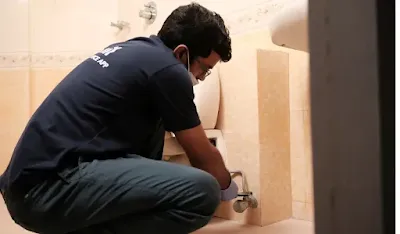What Causes Water Stains on Bathroom Walls?
What Causes Water Stains on Bathroom Walls?
Water stains on bathroom walls are not just ugly—they can also be a sign of bigger plumbing or moisture issues. Whether you see yellow patches, peeling paint, or mold, these stains usually mean there's a problem that needs quick action. If you’ve been looking for plumbing services near me, it could be time to think about the fact that those stains are more than just surface problems. Let's look at the causes, dangers, and fixes for water stains on bathroom walls.
Common Signs of Water Stains
Water stains can show up in different shapes and colors. Here’s what to watch for:
- Yellow, brown, or dark spots on the wall or ceiling
- Peeling paint or bubbling wallpaper
- Mold or mildew around the edges of the stain
- Damp or musty smell
- The wall feels soft or spongy when touched
These signs usually mean that water has been trapped behind or inside your bathroom walls for a while.
Main Causes of Water Stains on Bathroom Walls
1. Leaky Pipes Behind Walls
One common cause is a leaking pipe hidden behind the wall. Even a small, slow drip can cause big stains over time, especially if the leak is from a hot water pipe, which can speed up moisture absorption.
2. Faulty Shower or Bathtub Seals
If the seals around your bathtub or shower are not secure, water can leak into the walls. Over time, this hidden moisture can cause stains, damage to the structure, and mold growth.
3. Condensation Buildup
Poor ventilation can lead to too much moisture and condensation, especially in small bathrooms. Over time, condensation on cold wall surfaces can seep into the paint or wallboard, causing discoloration and damage.
4. Roof or Ceiling Leaks
Sometimes, water stains on the bathroom ceiling or upper walls come from leaks above, either from a leaky roof or plumbing in a bathroom on the floor above.
5. Clogged or Damaged Ventilation Systems
If your bathroom's exhaust fan is not working well, steam from showers or baths will stay longer. This moisture can settle on walls, leading to stains and mildew.
Why You Shouldn’t Ignore Bathroom Wall Stains
Not addressing water stains can lead to:
- Mold growth can cause breathing issues
- Structural damage to walls, insulation, and wood framing
- Higher water bills from unnoticed leaks
- Increased repair costs if the issue is not fixed quickly
These problems affect not only the look of your bathroom but also your health and safety.
What to Do When You See a Water Stain
Step 1: Identify the Source
Before fixing the stain, find out where it’s coming from. Is it near plumbing fixtures? The ceiling? The shower? This will help you know if it’s from plumbing inside, leaks from outside, or ventilation issues.
Step 2: Call a Professional
Rather than guessing, it’s best to contact plumbing services nearby for a detailed inspection. Plumbers can use moisture meters and cameras to find hidden leaks without having to break open your walls unnecessarily.
Step 3: Repair and Repaint
Once the source is repaired, let the wall dry completely. Then, clean the area, remove any mold if it's there, and repaint using mold-resistant paint to stop future damage.
Conclusion
Water stains on bathroom walls won’t go away on their own. When you need quick expert help, Fixail is ready to assist you. Our skilled plumbers can find hidden leaks, repair broken pipes or fixtures, and make your bathroom walls clean and free of stains again.
From small moisture problems to big plumbing leaks, Fixail offers dependable, affordable, and professional plumbing services in your area. Don’t let a stain become a serious issue—contact Fixail today for trustworthy expert help.




Comments
Post a Comment